Teeth of wisdom: cannot be removed
- From the sandbox
- Tutorial

Dear friends, today I suggest you talk about wisdom teeth. Moreover, to talk about the most difficult and the most incomprehensible - indications for their removal.
Since ancient times, there are a lot of jokes, superstitions, legends and stories, including very scary ones, associated with eights (third molars or “wisdom teeth”). And all this mythology is widespread not only among ordinary people, but also in the medical community. Gradually, during the discussion, I will try to debunk them and show that wisdom teeth are not such a problem, both in terms of diagnosis and in terms of removal. Especially when it comes to a modern doctor and a modern clinic.
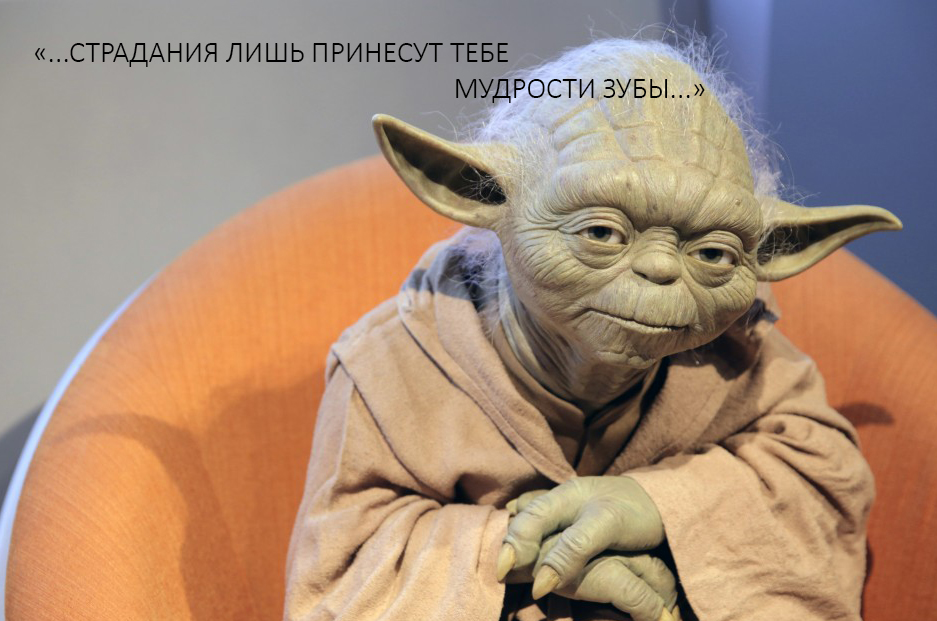
Why are wisdom teeth so called?
Everything is very simple. Eighth teeth usually erupt between the ages of 16 and 25 years. At a conscious age, quite late in comparison with other teeth. Like, got so wise? Get wisdom teeth in the form of bite problems and pericoronitis - on! Yes, sometimes a person’s wisdom begins with pain and suffering associated with wisdom teeth. No pain no gain, as they say.
Why does someone’s wisdom teeth erupt, while someone doesn’t?
Because someone is wise, and someone is not very. Joke.
To begin with, it should be clarified that the vast majority of people have wisdom teeth, and their absence from birth is a very, very big rarity. To be born without the teeth of wisdom and their rudiments is like winning a jackpot - urgently buy a lottery ticket, because you are a lucky person.

But here eights erupt far from everyone. And it depends on the state of the bite. Or rather - from the availability of space in the jaw for their eruption.
It so happened that they begin to grow at a time when the active growth of the jaw bones is slowing down, and the dentition, as it were, is already “equipped”. The tooth grows up (or down, if on the upper jaw), stumbles upon an obstacle in the form of an already erupted seven, stops or begins to turn.

Thus, not only retarded (non-cut), but also abnormally located (dystopian) eights are obtained.

In fairness, it should be noted that there can be more than four wisdom teeth. Occasionally, there are not only “eights”, but also “nines” or even “tens”. Of course, such an assortment in the oral cavity does not lead to anything good.
If there are eights, then for some reason is it necessary?
Well, most people have a belly button. And he, obviously, is also intended for something. For example, for storing woolen spools and other materials for applied art.

Seriously speaking, the eights are a kind of atavism. A reminder that millions of years ago our ancestors ate raw meat, mammoths, and other animals, and even vegans were much more brutal, instead of celery, they chewed baobab bark.
In this regard, the jaws of our ancestors were much larger and wider, and even Nikolai Valuev against their background would have looked slightly feminine. And all thirty-two teeth in such jaws fit perfectly, everyone was happy.
However, in the process of evolution, people became smarter, learned how to process food, fry meat and stew
So eights became "unnecessary" teeth. And, probably, it would be more correct to call them not “teeth of wisdom”, but “teeth of Australopithecus” - you look, and people will begin to relate to them more adequately.
What are eights?
You will not believe it, but, basically, eights are eighth in a row.
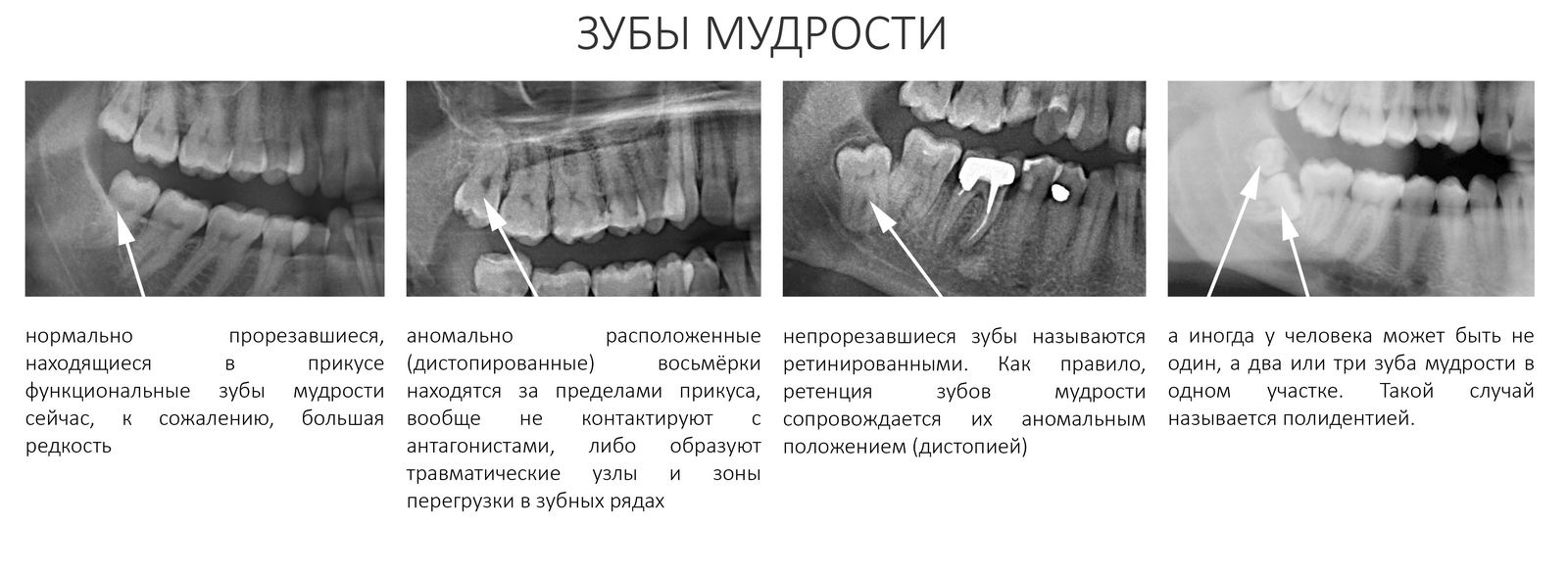
What will happen if you don’t bother with wisdom teeth at all?
If the eights erupted, are in the bite and function normally, then, of course, nothing will happen. It is enough to carefully monitor hygiene in their area, because there may be some difficulties with it due to the gag reflex and poor vision, periodically appear to the dentist - and the norms. Such wisdom teeth will exist happily ever after.
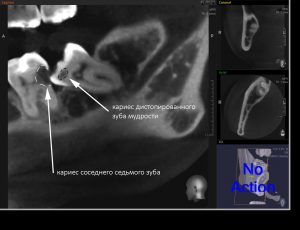
With dystopic wisdom teeth, everything, it seems, is also understandable - due to their location, oral hygiene is difficult, and these teeth are quickly affected by caries. It happens worse if caries spreads to neighboring sevens, which, unlike eights, are functionally very important. Often caries appears on the farthest and most poorly visible tooth surface. And a person notices him only when the whole thing starts to hurt. That is, too late.
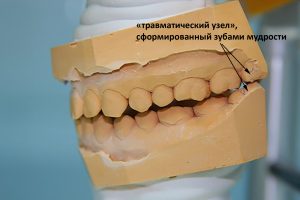
In addition, abnormally located wisdom teeth create in the bite of the so-called. "Traumatic nodes" disrupt the usual reflex connections, which leads to problems with the musculo-articular chewing apparatus. Subsequently, this is aggravated by occlusion pathology, overstrain of the masticatory muscles, a crunch in the temporomandibular joints, i.e., signs of muscular-articular dysfunction appear. And, as a rule, the treatment of such muscular-articular dysfunctions begins with the study of the role of eighth teeth in this pathology and the adoption of necessary measures (i.e., removal).
It is more difficult to understand what happens to the worn (not cut) wisdom teeth. It would seem that the tooth is not visible, caries is almost not threatened, I would sit and sit ... However, there are a number of unpleasant consequences.
Despite the fact that the tooth has not yet erupted, it already affects the dentition. It can cause the movement of teeth and the formation of crowding in the anterior region:

Due to the absence of a bone septum between the holes of the seventh and eighth teeth, a deep pocket is formed between them, where food debris, plaque and microbes can fall, which leads to inflammation. Sometimes quite acute and hazardous to health.
The process of teething of retined teeth, especially at the age of 20 years and older, is often accompanied by inflammation - pericoronaritis.


Treatment of pericoronitis is a separate issue. Somehow we will discuss it, but now you need to know the main thing - it’s better not to bring it to pericoronitis and, if it is clear that there is not enough space for the wisdom teeth, and their eruption will be connected with difficulties, it is better to remove them in advance.
But the most unpleasant thing that can be expected from the retinated wisdom teeth is cysts.

Their source is the follicle surrounding the tooth germ. When a tooth erupts, the follicle disappears, but in the case of retention, it persists and can serve as a source of tumors and cysts.
Sometimes - large enough and very dangerous to health.

And although all this is completely treated for itself, you must admit that it is better not to bring yourself to such a state.
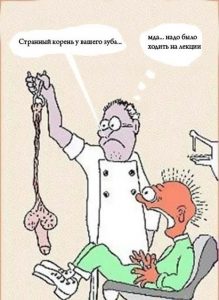
Why are the opinions of doctors about removing wisdom teeth so contradictory?
Basically, it all comes down to the doctor’s experience in removing wisdom teeth. If the procedure itself is given to the doctor hard, takes a lot of time and brings the patient only suffering, then he is mainly an opponent of removal. And vice versa, if the removal of eights, even the most difficult ones, does not present serious difficulties for the doctor, on the contrary, he stands for a final and radical solution - the removal operation.
When can not be executed, can not be left to leave?
Meanwhile, the criteria for removing / not removing wisdom teeth are very simple. They can all be reduced to one simple phrase:
Diseases and complications associated with wisdom teeth, or threats of these same diseases and complications are indications for the removal of wisdom teeth.
All. There are no other indications / contraindications.
Consider the following examples:
- Normal, erupted and fully functioning in a normal bite does not need to be removed. Moreover, such teeth in case of caries can (and should) be treated. The situation is different if caries is complicated by pulpitis or periodontitis - in such cases it makes sense to think, because the treatment of root canals in third molars presents certain difficulties. Maybe you do not need to bother with the channels?
- An abnormally located (dystopian) wisdom tooth. He did not have enough space and he either leaned in some direction, or remained half in the gum. Such a tooth will never function, but it creates problems for both the bite and adjacent teeth. Do I need to delete it? Of course.
- A refined (uncut) wisdom tooth. It seems like it doesn’t bother. Located somewhere far away. She does not participate in chewing and will never participate. What can lead the retinned eight, we already know. Does it make sense to wait for these complications? It seems to me that no, it does not.
- The tooth began to erupt, the gum over him was inflamed. Pericoronaritis, this is what this disease is called, is a sign that the tooth does not have enough space in the jaw and, as a result, it turns out to be either dystopic or lead to tooth displacement and malocclusion. Should pericoronitis be treated with a simple excision of the hood? Unlikely. It is better to solve this problem radically, namely by removing the problem tooth.
Conclusion
From the foregoing, it can be concluded that the removal of wisdom teeth most often occurs when the patient does not particularly bother them. That is, this procedure is the prevention of possible complications from the eights. This is correct. There is no method more effective and cheaper than prevention. And the best medicine is preventive medicine.
Next time I will tell you about how, in fact, the removal of wisdom teeth occurs, how to prepare for this procedure and what needs to be done after it.
Thanks for attention! Do not switch!
Sincerely, Andrey Dashkov.
What else to read about wisdom teeth and their removal?
- Removing wisdom teeth. How it's done?
- Teeth of Wisdom: Pull-Pull
-Consequences of untimely removal of wisdom teeth
- Maxillofacial surgery or not? That's the question
